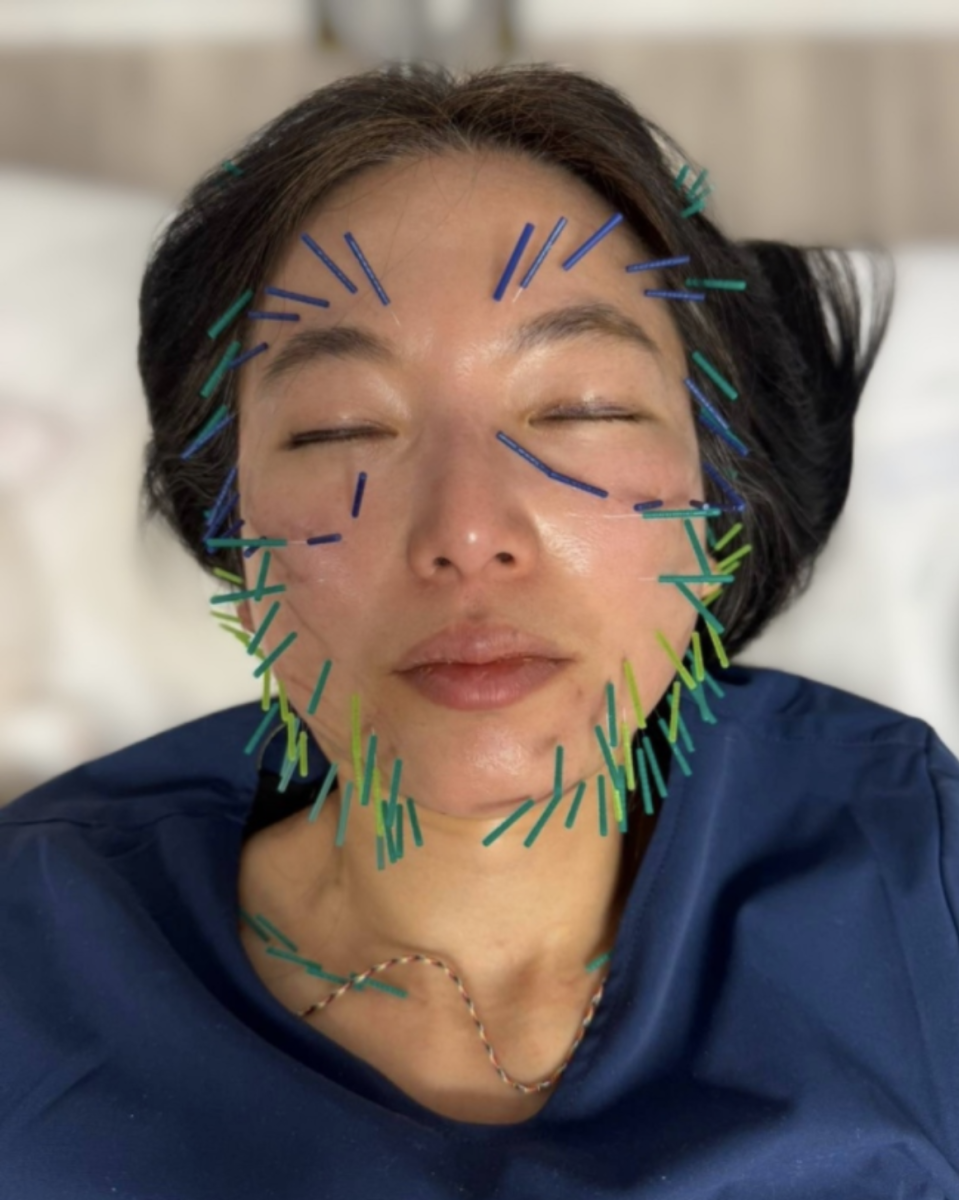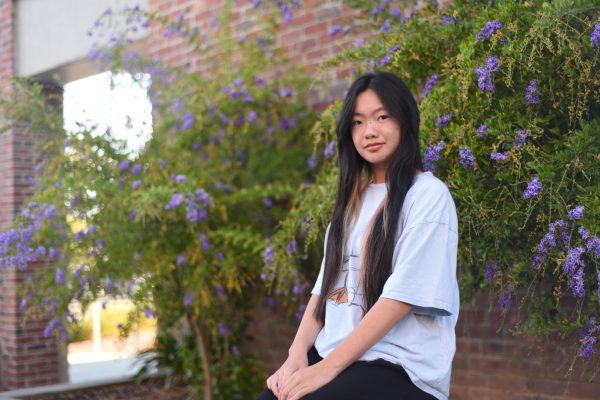Acupuncture
In her twenties, Jennifer Fang, a retired clinic manager and acupuncturist, found herself struggling with many chronic health conditions, including severe allergies and digestive issues. After visiting many Western doctors to no avail, she decided to try a different approach. Giving traditional Chinese medicine a chance, she enrolled in medical school, learning about human anatomy, physiology and the rich history of Chinese medicine.
“Learning about Chinese medicine was fun and challenging, and also very eye opening for me,” Fang said. “It gave me a lot of new perspectives. The more I learn about the human body, the more interesting it gets.”
Acupuncture stands as one of China’s most renowned medical traditions, dating back more than 3,000 years. According to Fang, Chinese doctors believe that the human body harbors 12 main meridians and acupoints, and by pinpointing these meridians, doctors can restore balance to a person’s Yin and Yang energies. This translates to effective metabolism, stable moods and energy levels.
Fang says the philosophy of acupuncture, which is rooted in Taoism, states that the mind, body and spirit are connected. She finds this belief admirable as it encourages patients to take more proactive approaches to managing their symptoms through diet, lifestyle and meditation.
“It really helped me to improve and get rid of a lot of the conditions I had,” Fang said. “I found it really fascinating because Taoism is about finding balance and harmony. I learned about it gradually, little by little, and it really helped me manage my mental health.”
Similarly, Chinese teacher I-Chu Chang states that she has had many positive experiences involving acupuncture, as it has helped her son recover from severe sports injuries. She would also visit an acupuncturist for injuries sustained during yoga. She emphasizes the importance of finding experienced doctors, mentioning that one of the acupuncturists she currently sees is familiar with the human body, as he is also a trained martial artist.
Chang recommends acupuncture to any student athlete who wants a quick and effective way to cure injuries. Fang agrees, suggesting that there are many good acupuncturists who can help athletes when they twist their ankles or knees.
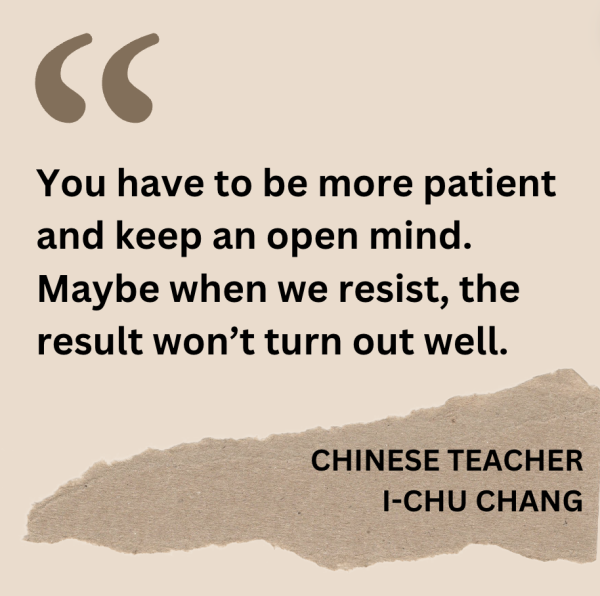 However, according to Fang, there are some things that acupuncture can’t assist in. She says that though there have been a few stories of success, more complex problems such as insomnia and infertility may be difficult to address. She also states that acupuncture can’t alter the physical body, such as fixing broken bones.
However, according to Fang, there are some things that acupuncture can’t assist in. She says that though there have been a few stories of success, more complex problems such as insomnia and infertility may be difficult to address. She also states that acupuncture can’t alter the physical body, such as fixing broken bones.
Many people seek acupuncture treatment for chronic issues and pains such as addiction, menstrual cramps, allergies and asthma, but because acupuncture has no scientific validity, there are also people who find it difficult to trust. According to Chang, this may also be because people who are unfamiliar with Chinese medical practices don’t wait for the result, or that they found a doctor who lacks expertise.
“You have to be more patient and keep an open mind because sometimes the needles scare people away,” Chang said. “Maybe when we resist, the result won’t turn out well. People should try to keep an open mind and not be so afraid of needles. That’s my advice.”
Herbal medicine
When she was a toddler, sophomore Sophie Tam remembers her mom’s surprise when she suddenly stopped crying. Worried, her mom brought her to a Western clinic, hoping that nothing harmful had happened to her daughter. Luckily, they found out that the only reason why Tam couldn’t make a sound was simply because of a throat infection.
“The doctors just said, ‘Your baby’s fine, just give her some painkillers,’” Tam said. “But my mom hated the idea of giving a baby painkillers, so she went to a Chinese medicine doctor, and he told her to make a kind of soup. Then she forced me to drink it every day, and then it got better.”
As a result, Tam has had a connection with Chinese herbal medicine since childhood, saying it’s a family tradition. She says that her family, and now herself, prefers traditional Chinese medicine over modern drugs due to how it has little to no side effects, even though it acts slower.
“With Western medicine, there’s the risk of your symptoms coming back,” Tam said. “Western medicine kind of just smashes it, and then let’s go and it’s still there. But Eastern or Chinese medicine puts emphasis on gradually getting better.”
Ling-Jung Kao, a Chinese medicine practitioner, says the reason why Chinese medicine is relatively side-effect free is because it is essentially food. However, she says that just like food, consuming too much of a certain herb can cause nega
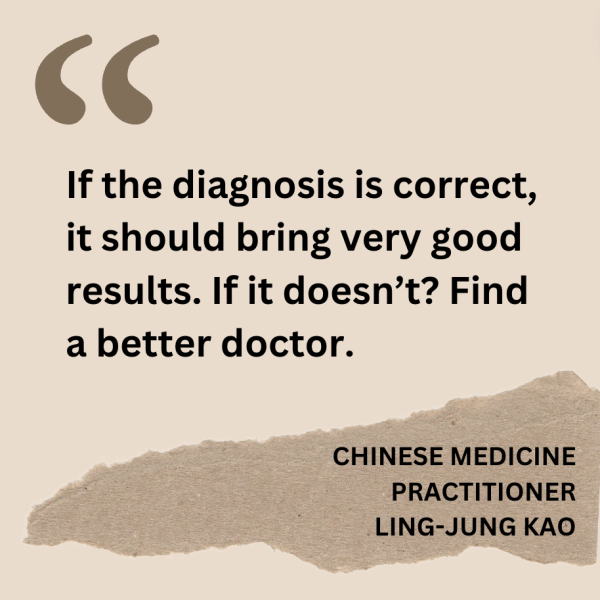
tive side effects, such as headaches or vomiting.
Kao states that the most popular herb used worldwide is goji, along with huang qi (astragalus), gan cao (glycyrrhiza) and hong zao (Chinese red date). She mentions how goji is helpful in soothing the liver or kidney, while goji and chrysanthemum tea have vision repairing and energy boosting attributes. Observing the prevalence of eye problems among high school students due to intense study schedules, she recommends goji to any student.
Drawing from personal experiences with infection and allergies, Tam suggests people who are struggling with these conditions to consider Chinese herbal medicine. She states that not only is the medicine cheaper, but it also promotes overall health. Kao adds that while some remedies can be prepared at home, she advises getting a prescription for more severe illnesses.
“Each ingredient we use is catered to what our patients need,” Kao said in Chinese. “We have a lot of medicines where we use animals as well. We use scorpion poison as well as silkworms and even deer antlers.”Kao mentions that some exotic ingredients utilized in traditional Chinese medicine are banned for the sake of protecting the ecosystem — pangolin scales, for example. Some herbs, like ma huang (ephedra), are prohibited by the U.S. for health and safety risks. While practitioners use alternatives, she notes that the results may not be as effective.
“Chinese medicine is very versatile,” Kao said in Chinese. “If the diagnosis is correct, it should bring very good results. If it doesn’t? Find a better doctor.”
Cupping therapy
The first time Fang attempted cupping therapy was during a class at her medical university, where the students’ first patients were their other classmates. Initially, she was intimidated by the presence of fire in the treatment, but after receiving cupping therapy herself, she found it deeply relaxing.
The most traditional way to start cupping therapy, also known as suction therapy, is by lighting a fire to create a vacuum in the cup. According to Fang, putting the heated cup on a meridian can stimulate blood circulation and relax the surrounding muscles. She mentions that many people also try cupping when they catch a cold or are suffering from han pain.
“TCM is a more holistic approach,” Fang said. “They try not to treat only the symptoms because they always believe there are other underlying causes. Otherwise, you can only have a band aid solution.”
Fang mentions how Eastern or Chinese medicine and Western medicine each have their own merits and drawbacks. She highlights the technological advances and precise diagnosing of Western medical practices compared to the limitations of Chinese medicine in treating diseases like cancer, which Western medicine has found solutions to.
Similarly to acupuncture, cupping does not have scientific validity behind it. However, Fang attributed that, from the perspective of Western medicine, both acupuncture and cupping affect the neurotransmitters to the brain, generating serotonin or endorphins to ease pain. Fang says that cupping can also be used as a remedy when acupuncture doesn’t do the job, as some people’s bodies react better to cupping.
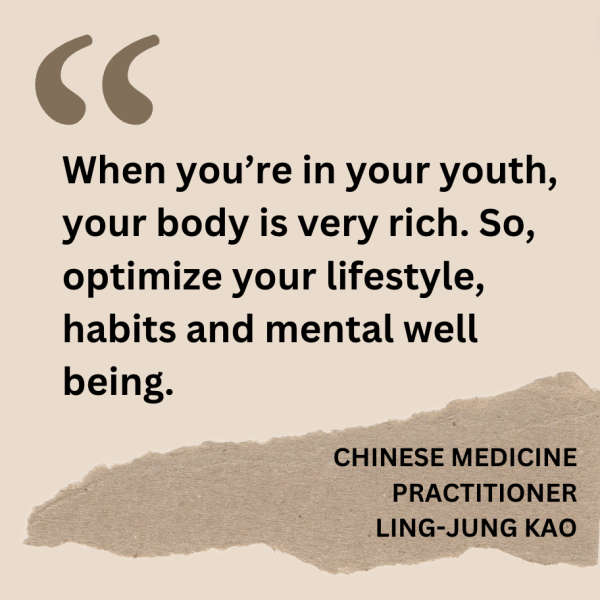 Fang also emphasizes that cupping in combination with massage therapy increases the effectiveness of both. She mentions an Indian practitioner from her clinic who specialized in cupping along with Ayurveda therapy, a traditional medical practice native to India. She adds that this combination has been effective for many complicated cases cupping alone couldn’t cure.
Fang also emphasizes that cupping in combination with massage therapy increases the effectiveness of both. She mentions an Indian practitioner from her clinic who specialized in cupping along with Ayurveda therapy, a traditional medical practice native to India. She adds that this combination has been effective for many complicated cases cupping alone couldn’t cure.
“I think massage therapy is very powerful because it also forms a connection between the practitioner and the patient,” Fang said. “We believe that qi, the lifeforce energy, between a good practitioner and patient can awaken the healing power.”
Fang suggests patients to take care of their bodies from a young age, as qi deteriorates the more health is neglected, weakening the body. She says that a patient’s lifestyle also determines if cupping gives long lasting results.
“It’s a very mysterious gift from the universe,” Fang said. “When you’re in your youth, your body is very rich. You are like a rich man, and you have a tendency to take it for granted. So, to young patients, I would say to learn about yourselves and always optimize your lifestyle, habits and mental well being.”




